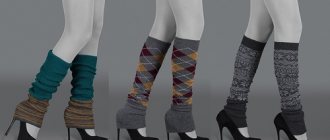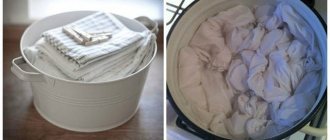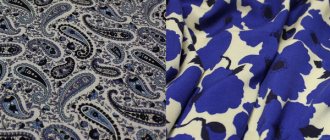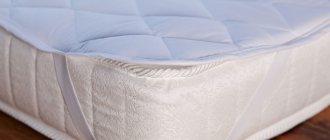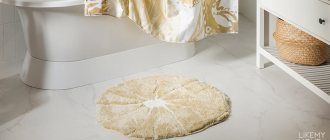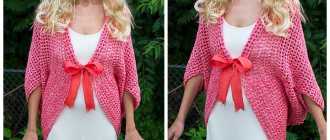If you need a rug for the front door or for the bedroom by the bed, then you can easily make it yourself. Handmade rugs are especially cute and pleasant.
Plus, there are many ways to make a floor mat from scrap materials or scraps of old clothes. Thus, you will do two useful things at once. Firstly, you will unload your closet from unnecessary things that you would be sorry to just throw away, and secondly, you will make a useful thing for your home.
This floor mat is not at all difficult to make with your own hands. We have selected several ideas for making such rugs.
Rug made from an old sweater
Rug made of knitted braid
Pompom rugs
Do-it-yourself pom-pom rugs look voluminous and airy. First, decide what size rug you need. Then, based on the size of your pom poms, calculate the number you need. You can learn how to make a pom-pom from yarn in this article. Knitting lesson: How to make a pom-pom
As a basis for sewing on pompoms, you can use construction mesh or just thick fabric.
Making a rug from pompoms
Rug made of pompoms
Home rugs
Floor rugs have always been in fashion. Rugs changed all the time, adapting to fashion trends, but they were, are and will be in our homes.
How to make a rug with your own hands, while spending a minimum of money, having a lot of fun while making it and freeing your closet from unnecessary things. Very simple!
A good housewife, thanks to her imagination and hardworking fingers, never wastes anything. In a couple of long winter evenings, you can make a new masterpiece from unnecessary T-shirts, socks, old yarn, twine, leftover fabric and other materials, delighting with bright colors and soft touches.
Look at the photos of hand-sewn rugs - they are very easy to make. This does not require any complex or unusual devices.
Scissors, hooks and knitting needles, needles and threads - these and some other items will turn scraps of fabric into practical woven rugs.
DIY massage mats
Probably everyone knows that foot massage is very beneficial for health. To do this, a massage mat will help you, which you can make yourself from chestnuts or pebbles.
To make a rug from chestnuts, string them on thick fishing line, piercing the chestnuts with a gypsy needle. We connect the chestnuts in a checkerboard pattern.
Chestnut massage mat
To make a beautiful pebble rug, decide on the size and base for the rug. The pebbles will need to be glued to the base. Therefore, it is better to use a fleecy fabric for the base so that the pebbles stick well.
Before gluing the pebbles, arrange them on the base in the desired pattern. Make sure there are enough pebbles. Once you have laid out the pebbles in a pattern on the base, start gluing one stone after another without removing them from the base of the mat.
Pebble massage mat
Massage mat
How to make a massage mat? Anyone can make this rug. It is important to have desire, imagination and affordable items for everyday use.
This rug is easy to make and does not require any money. So, you can stock up on chestnuts, acorns, various cereals or pebbles. You can attach it with glue or fishing line.
Textile rugs
A textile rug can be made from strips of fabric. To make such strips, you can use, for example, an old sheet. To make such a rug soft, place a padding polyester inside the fabric strip. Then we sew the prepared strips on a sewing machine in a circle using a zigzag seam.
Old jeans also make good rugs. Prepare stripes of jeans and join them in a checkerboard pattern. Along the perimeter, also trim with a denim strip.
Rug made from old jeans
Making a rug from old jeans
Braided carpets
Even a novice needlewoman can weave a braid from three strips of fabric. Terry fabrics are best suited for creating such a rug. They will be able to maintain their comfort and softness even when folded.
To create a pleasant creation to decorate the floor, you will need ribbons from bathrobes, towels, and sheets. The individual pieces are connected into long ribbons, which are then used to weave a regular braid.
You can lay the resulting long braid in a circle, oval, rectangle or square. To add density, individual turns are joined together by hand or using a sewing machine.
Cord rugs
The thicker the cord you choose, the thicker the rug will be, and it will be faster and easier to make. The cord can be sheathed with fabric or tied with yarn using a hook.
Glowing mat
Mat-mat for needlework: why is it needed and what is it good for?
How the rug works
Mats-backings (also called cutting mats) have a dense, durable base that cannot be pierced with an awl or cut even with a sharp scalpel, so it will save your table from damage. On top of the mat is a softer layer of a special elastic material like rubber. Fabric, leather, paper will not slip on such a surface, and markings applied to the mat will help in constructing patterns, drawing details and cutting.
Photo: squadron.com
In most good rugs, the upper elastic layer has a “self-healing” function: a cut made on it “heals” quite quickly and disappears.
Another plus: the surface of the substrate is matte, so it does not glare from the sun or electric light, which is also convenient, especially when working with small details or in cases where special precision is needed.
Photo: simplysewcrafty.co.uk
The coating material is also good because it hardly damages the tool blades - they remain sharp much longer than when working on a metal or glass substrate.
What types of rugs are there and why are they needed?
Types of needlework for which a rug will be useful: scrapbooking, quilling, patchwork, working with suede and leather, working with plastic, cardboard, colored paper, creating patterns yourself (both for sewing and other types of needlework), any work with a breadboard knife , scalpel or rotary cutter.
Photo: mostcraft.com
There are mats of different thicknesses (usually from 1.5 to 3 mm) and different sizes (A1, A2, A3, A4, etc.), there are rotating models - they are especially convenient for cutting. There are also double-sided mats - they have a self-healing rubber layer applied on both sides, so the mat perfectly “adheses” to the table surface and does not move or slip.
Photo: axminster.co.uk
Buy a backing mat for patchwork (size 60x90 cm) on BurdaStyle
Buy a mat for cutting knives (size 45x60 cm) on BurdaStyle
How to use a rug to make it last longer
The rug will last longer if you use the sharpest possible tools when working with it (marks from dull knife blades “overgrow” more slowly and worse). It's also best to try not to cut too many times in the same place. Try to immediately remove small scraps and particles of materials from the mat so that they do not get into the fresh “tightening” cuts. It is better to cut at an angle of 90 degrees.
Photo: tw.mornsun.com
Of course, it is better to protect the mat from getting glue, dyes, solvents or other chemicals on it.
You should not expose the mat to excessive heat by leaving it near heating appliances, in direct sunlight, or placing a cup of hot tea on it, especially using it as an ironing board. At elevated temperatures, the mat loses its “self-healing” properties. You should not freeze the mat or expose it to sudden temperature changes for the same reasons.
It is better to store the mat in a flat position (it is better not to roll it up), where it will not be exposed to light, cold or heat. When storing, it is better not to place heavy objects on the mat so as not to disturb the porous structure of its soft layers.
Rugs made from knitted tape
Rugs using weaving method
A round mat can be made using a gymnastics hoop.
Rug on a hoop
We stretch a rope onto the hoop. You can take a clothesline.
We fix the knitted ribbon in the center and begin to weave it in a circle through the rays formed by the rope.
Making a rug on a hoop
To weave a rectangular rug, you need a frame of this shape.
Knitting rules
Before crocheting a rug for beginners with your own hands from rags, you should learn some rules and features of working with a crochet hook.
- Even if there are not many financial opportunities, threads (materials) and a hook must be selected correctly. Crocheting rugs is a simple task, provided that the right tool is selected. If it is difficult to do this yourself, then you should come to a specialized store with a sample of yarn, the seller will help you choose.
- Before starting the main work, that is, knitting a rug, you need to make a sample. Its size is approximately 5x5 cm. In this case, you should use the same yarn, hook, knitting pattern that will be used for the rug.
- Knit without tension, that is, without tightening the loops, otherwise the product will look ugly.
Rugs made from knitted elements
DIY twine rugs
Knot rugs
Knot rugs have this name because they are based on knots. These rugs can be made from old T-shirts. Cut them into small strips and tie them to the base using knots. You can use a construction mesh as a basis.
Spread the love
"Stone" rug
Despite its name, this flooring is striking in its softness. To create a custom carpet, you will need to make many knots with soft filling inside. The knots are sewn to the base, creating a unique carpet, most reminiscent of sea pebbles or a garden path.
This was only part of the ideas for making a home carpet. Photos of handmade rugs will show a variety of options for making this essential item in any home.



